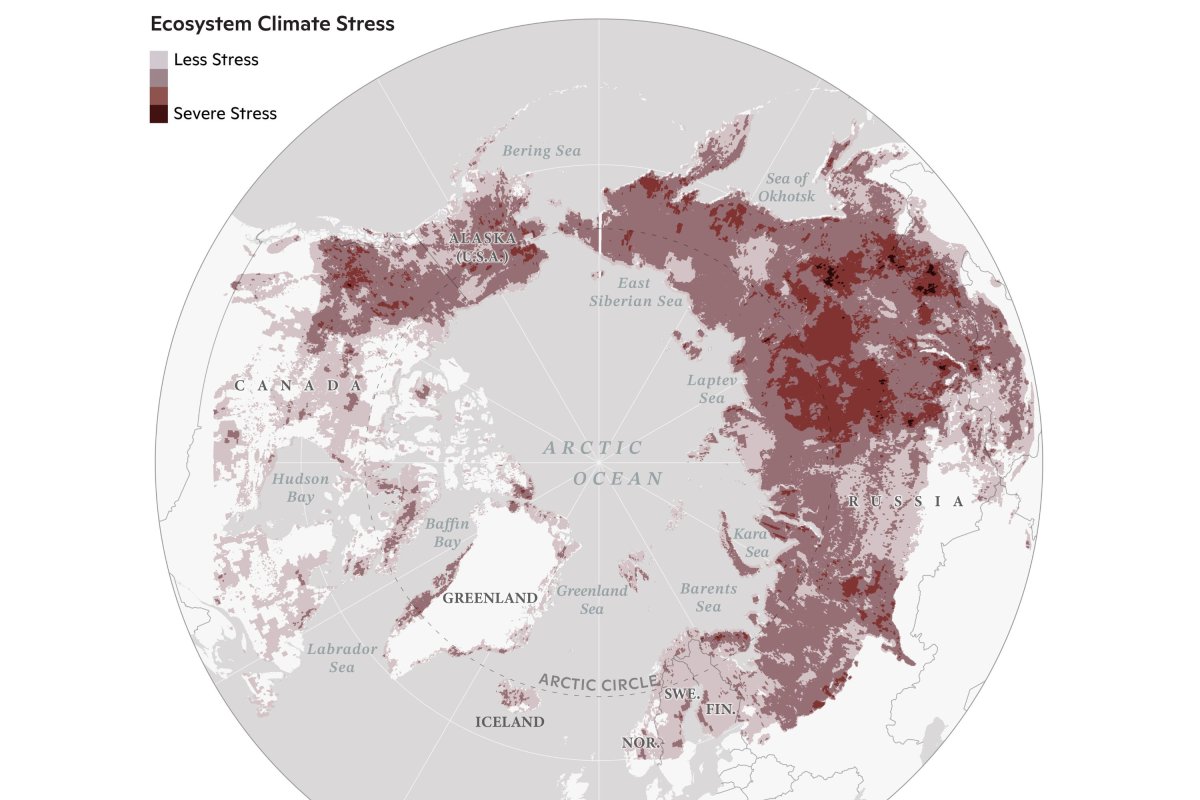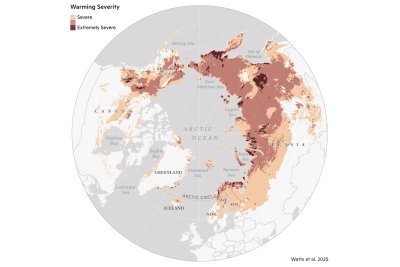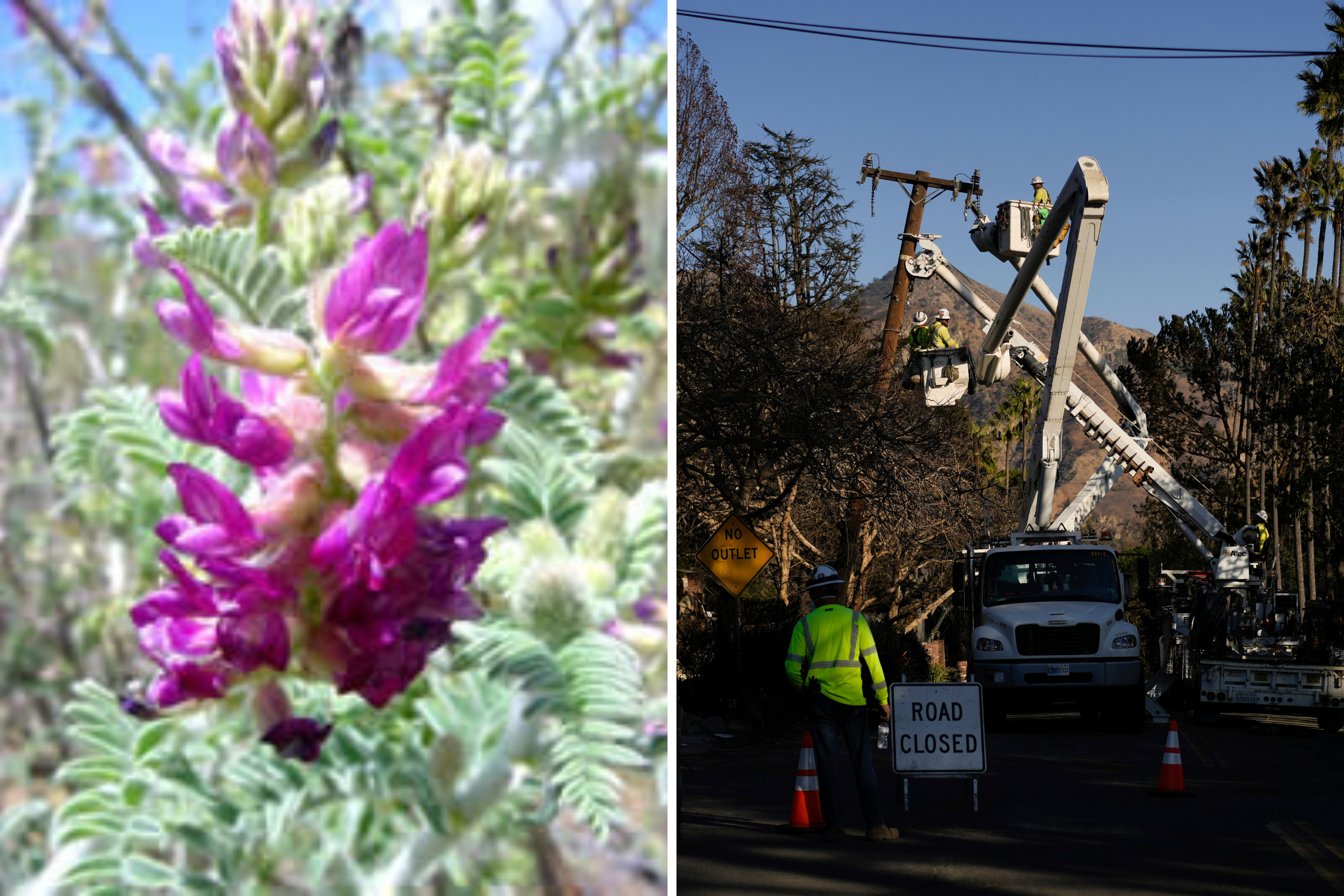Some of the regions changing the fastest due to climate change are in the far north of the U.S. and Canada.
According to a new paper in the journal Geophysical Research Letters, the fastest-changing areas are dotted around Alaska, Canada's Northwest Territories, and Siberia.
20 of the most vulnerable hot spots were home to permafrost, which is rapidly thawing around the Arctic, with others being boreal forests.

Permafrost is soil, rock, or sediment that remains frozen for two or more consecutive years. It is found in high-latitude regions, such as the Arctic, Alaska, Siberia, and parts of Canada, and can contain large amounts of organic material, including plant and animal remains that have been frozen for thousands of years.
Much of Alaska is underlain by permafrost to some extent, with about one-third of the state consisting of continuous permafrost, where the ground is frozen year-round.
"The Arctic and boreal regions are made up of diverse ecosystems, and this study reveals some of the complex ways they are responding to climate warming," study co-author Sue Natali, lead of the Permafrost Pathways project at Woodwell Climate, said in a statement.
"However, permafrost was a common denominator—the most climate-stressed regions all contained permafrost, which is vulnerable to thaw as temperatures rise. That's a really concerning signal."
In the paper, the researchers describe how they used over 30 years' worth of geospatial data and long-term temperature records around the world to determine how vulnerable ecosystems are in terms of temperature, moisture or drying, and vegetation stress.
They found that there are vast swaths of land around the Arctic that are under severe stress due to one or several of these factors.
Between 1997 and 2020, there was severe warming across east and center Siberia, and 99 percent of Eurasian tundra saw "significant" warming.
Some hotspots across Siberia and northern Canada became drier during this period, but there was increased water and flooding across central Canada and Alaska, which is an indicator of melting permafrost.
1 of 3

Permafrost is thawing due to climate change and the subsequent rise in global temperatures. Arctic and subarctic regions are warming at roughly twice the global average, and as snow and ice melt earlier and vegetation grows, more heat is absorbed by the ground, accelerating thawing.
Thawing permafrost releases greenhouse gases like methane and carbon dioxide, which further contribute to warming.
"Climate warming has put a great deal of stress on ecosystems in the high latitudes, but the stress looks very different from place to place and we wanted to quantify those differences," study co-author Jennifer Watts, Arctic program director at Woodwell Climate, said in the statement.
"Detecting hotspots at the local and regional level helps us not only to build a more precise picture of how Arctic warming is affecting ecosystems, but to identify places where we really need to focus future monitoring efforts and management resources."
Thawing permafrost alters soil stability and nutrient availability, impacting local plant species and animal habitats. Additionally, it weakens the structural integrity of the ground, causing buildings, roads, pipelines, and other infrastructure to collapse or require expensive repairs.
The paper also found that the Siberian boreal forests were under serious stress due to climate change.
"These forested regions, which have been helping take up and store carbon dioxide, are now showing major climate stresses and increasing risk of fire. We need to work as a global community to protect these important and vulnerable boreal ecosystems, while also reining in fossil fuel emissions," said Watts.
This study is hoped to highlight the regions of the world that need the most urgent work to maintain and manage, and also reveal the scope of climate change's effects in the most vulnerable areas around the globe.
Do you have a tip on a science story that Newsweek should be covering? Do you have a question about climate stress? Let us know via science@newsweek.com.







.png)












 English (US) ·
English (US) ·